Living in Mexico as Expat: Things to Know
Have you ever thought of living in Mexico as an expat? Is it safe to live in Mexico?
In this Expat Interview, Natalie shares about her expat life in Mexico. She provides tips on the cost of living in Mexico, the procedure of moving to Mexico, and all the related matters you should consider before living in Mexico.
About Mexico
Mexico is a diverse country with more than just pristine beaches and wild spring break parties.
It’s also more than tequila and guacamole. Mexico boasts Mayan Ruins, incredible architecture, mouth-watering food that differs from region to region, and different climates.
There are jaguars in the jungles, Las Siete Luminarias craters in Guanajuato, and thousands of cenotes in the Yucatan Peninsula.
Riviera Maya is home to the Northern Hemisphere’s largest coral reef. That’s just a tiny bit of the biodiversity and variety of this large and wonderful country.
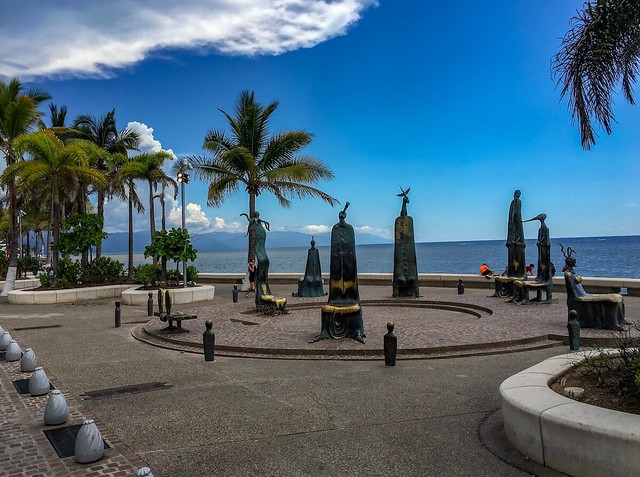
About Natalie and her expat life in Mexico
I’m an American living in central Mexico with my husband and two children. We moved to Mexico on May 1, 2017.
I’ve never lived outside of Ohio, and I agreed to move to Mexico for my husband’s job before I ever visited the country.
While moving with my husband’s company had some downsides (there was a lot of disorganization in the third party they hired to assist with moving), it had many more upsides.
They paid for the move, assisted both in the US and Mexico, provided the visas and temporary residence cards, and offered a cultural liaison/concierge type of person for the duration of our stay.
We can ask her for help with anything we need, including making requests to our landlord, for instance.
Why did you choose to live in Mexico?
Initially, my husband convinced me to move the family to Japan.
I was excited, and I started working on learning a little Japanese. I even joined an Expats in Japan group online.
However, a job opened up first for Mexico that was perfect for my husband, and we decided Mexico was the place for us.
It takes much less time to fly to Ohio from Mexico than from Japan, making sense as we both have aging parents. Thankfully, my husband got a job!
How to prepare for moving to Mexico?
Initially, I started using Duolingo to learn Spanish.
I quickly gave up because it was a struggle to start from scratch with that particular app. I’ve picked it up again now that I know some basic grammar. It’s a huge help for learning vocabulary and practicing pronunciation.
I also ended up getting the names and emails of several expat wives already in Mexico with the same company.
They each had a unique perspective and valuable insight.
I asked all of the two questions in my first email: “What do you wish you knew before moving to Mexico?” and “What is something I should know that I wouldn’t think or know to ask about?”
It got the conversational ball rolling.
Tips
- Moving tips: Relocating abroad? Try Sirelo for free quotes from top international movers that fit your budget. Learn more here.
- Money transfer: I use Wise for my international transfers. Quick, secure, and their fees? Way lower than most banks I’ve tried!
- Expat insurance: Life abroad has its surprises; make sure you’re covered with expat insurance.
The cost of living in Mexico
a) Accommodation in Mexico
Our rent here is around $1,250, which is relatively high for our little town.
We were able to renegotiate at a lower price, which is more in line with the average rent price in our neighborhood. We are in a gated community with some of the best security measures in place.
Our house is also big. It’s over twice the size of where we lived in Ohio. I don’t have to drive far to get groceries, school, and gym, so I spend less than $25 per two weeks on gas.
b) Groceries
Due to my celiac disease and higher prices for gluten-free items, we spend more on groceries than an average family would.
We spend around $400-$500 per month on groceries, including non-food items and dog food.
c) Other expenses
The Internet is $20.85 per month.
Utilities run around $100 per month (gas and electric – but electric can vary greatly. One family I know pays approximately $150 per month for their electricity).
One thing to be aware of is that you may need to do some digging if you have a really high or really low electric bill.
It’s been common here for people to be paying for someone else’s electricity along with their own due to illegal hookups.
If it’s low, you can be on the receiving end of such action, and it can cause you future problems.
Where are the safest places to live in Mexico?
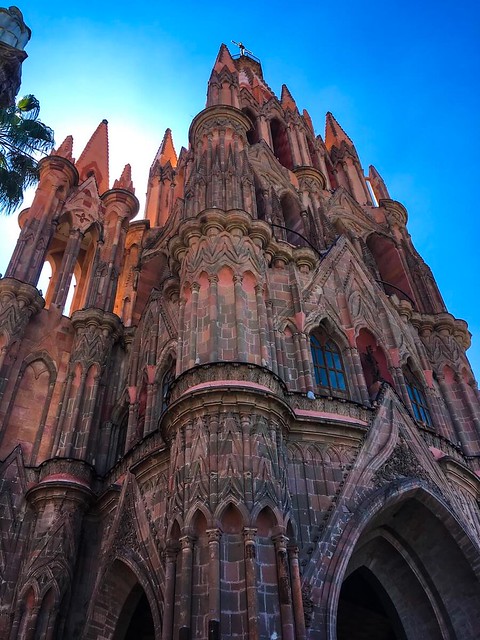
If you’re considering becoming an expat in Mexico and want to know the safest areas, currently, rumor has it that Merida, Cancun, Tulum, and San Miguel are good choices.
Larger cities, like Guadalajara and Queretaro, also have good reputations thus far. Remember, changes in safety status can happen quickly.
After my experiences with having the company help us by hiring a local relocation firm, I’d suggest doing that or finding a trusted local to help you out.
Even with help, the process of renting was a little convoluted. We have a wonderful landlord, but other expats we know have moved because their landlords were unresponsive.
So far, I love living in Mexico. We have good days and bad days, just like we’ve always had. Overall, my kids, husband, and I are very happy.
How to deal with difficulties while moving to Mexico?
We moved with four people and seven bags on moving day.
Due to circumstances beyond our control, our shipment was packed less than a week before moving. The best-case scenario was that it would arrive a week after we arrived. It was much longer.
Being in a nearly empty house with two little kids in a country where you don’t speak the language and don’t know anyone is pretty much hell.
Luckily, our neighborhood has two fantastic playgrounds and heading to one on our second day. I ran into one of the expats, who is now my friend.
We’d met so briefly on our house hunting visit. I didn’t know her name or where she lived.
Additionally, our town has a small expat community, and most of the Americans/English speakers know each other.
Did you experience any discrimination in Mexico?
We found out after moving here that we are paying higher rental prices than a Mexican would be paying, but other than that, I haven’t noticed any discrimination.
We are advised to stay out of certain areas, especially at night, because it’s assumed we have money as foreigners.
One of the reactions I didn’t expect was people touching my children’s hair. My kids have blonde hair, and my daughter’s one is particularly bright.
Once, while visiting San Miguel de Allende, a woman with the most beautiful, glossy, black hair I’ve ever seen surreptitiously touched my daughter’s hair.
I guess it is a case of exotic being the thing you don’t see every day.
How did you overcome culture shock in Mexico?
I did have culture shock.
Initially, I thought it was a one-and-done thing, but my research and experience show that it comes in waves.
Occasionally, I’ll have a strong feeling that I want to go home. I don’t want to learn any more Spanish. I don’t want to be driving with the crazy drivers in my town.
During my first home visit to the USA, I also had a strong feeling that I just wanted to go home, back to Mexico.
One of the best things that helped us with culture shock was bringing our dogs. They had quite the adventure – going on a 3-day road trip from Ohio into central Mexico.
I also have an incredible friend who drove them from Ohio and across the border. We hired a service to take them from the border to our town.
What do you like about Mexico?
I love the food here.
It’s especially great here for me because I have celiac disease, and corn is more widely used than wheat (which I cannot eat).
I love the spicy candy. There are many varieties of tamarind mixed with chilis and sugar, and I can’t get enough. In the USA, I didn’t really eat candy, just some chocolate every so often.
Here, I constantly talk about spicy candy and amazing tacos.
Obviously, the food is more than just tacos, and I love everything I’ve tried (except for the intestine-filled Gorditas). Speaking of Gorditas, it’s worth trying them in Mexico because they are not what Americans usually envision, and they are so much better.
I also love the people I’ve met here. Even the ones with whom I struggle to communicate because my Spanish is still pretty poor. Many people are so patient with my struggling language skills.
Bad things about Mexico
There are sad-looking stray dogs everywhere.
It breaks my heart to see them. There are a few local rescue organizations that do spay or neuter animals before they place them for adoption. Even so, the stray dogs run rampant. I have seen them in all the small towns I’ve visited so far.
Driving here can be really crazy. People will turn one lane into 2, 2 lanes into 3, and so forth.
You have to be aware of everything going on around you, and this isn’t even during rush hour!
There are also families on mopeds, bicycles, and people pushing or biking with carts to watch out for on the roads.
I’ve been noticing more bicycles on the wrong side of the street lately, too. Cars and buses also run red lights frequently.
My close friend is from the northern part of Mexico, and she assures me that people don’t drive like that up there.
Additionally, you have to worry about people’s brake lights not working.
We almost smashed into a pick-up truck, which slammed on his brakes without working brake lights while traveling on a highway. Luckily, we had space to avoid a collision.
What are your favorite things to do in Mexico?
I love traveling around visiting lesser-known spots. We visited this little town called Xilitla. It’s in the Sierra Gorda mountains, and it’s crazy awesome.
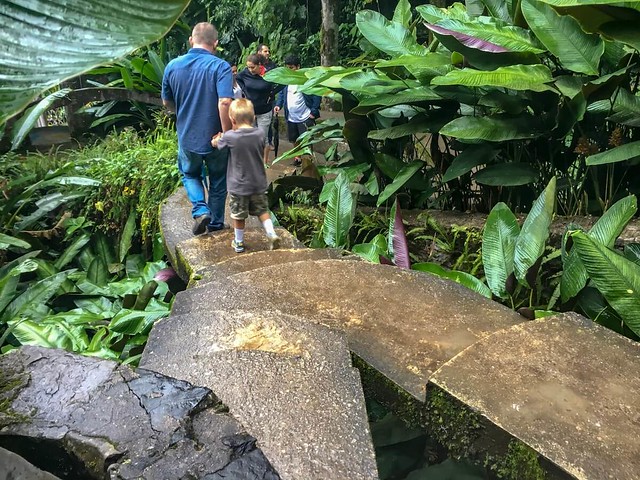

An artist chose the town as the place to create his surreal art garden, Las Pozas. In the middle of the jungle, on a mountain, you can climb up and down cement steps and platforms and concrete art. Describing it doesn’t do it justice. It feels like you are in the middle of old ruins, but the work began in 1945, so it’s relatively modern.
Where do you recommend visiting in Mexico?
So far, my favorite places are San Miguel de Allende, Xilitla (he-leet-la), las Siete Luminarias, and Pena de Bernal.
San Miguel has many tourists and expats, so you’ll hear a lot of English spoken there.
Pena de Bernal is a popular spot with Mexicans, but it seems like there aren’t many tourists from other parts of the world. Consequently, goods and services are quite a bit cheaper there than in San Miguel and Guadalajara.
Xilitla is somewhere in the middle. It is in the Sierra Gorda mountains, which seem like several towns do receive a fair amount of tourists from all over the world. Xilitla is one of those places that is a challenge to get to, and the reward is huge.
Las Siete Luminarias are seven craters, and the most famous is called El Rincón del Parangueo. However, the signs that led us to it did say, “Las Siete Luminarias.” You can climb down into the crater, which is covered in white ash and white mud. It’s like being on another planet, and I’m really surprised it hasn’t been used in any sci-fi movies or tv shows.

So far, I haven’t been disappointed in anywhere I’ve visited. We will soon be visiting the Yucatan Peninsula, which looks like it will also be awesome too.
How to meet new people in Mexico?
I have not found it easy to make new friends with locals in my town.
Coming into a small but established expat community, I made friends with them right away, but it took a while to meet people outside of that community.
Even though I’d prefer to homeschool, my children started school here only because we were struggling to meet people (well, that and there is next to nothing to do in our town).
Some of these problems are unique to my town. It was a small town that experienced a lot of growth very quickly.
Because it was small, people had grown up together, had their families here, and didn’t need outsiders. Everyone is still friendly; they just don’t need another friend.
Of course, not everyone is like that, and I’ve started to meet a lot more people through school, friends of friends, and on my own. There is a language barrier, and I feel that it has contributed, as well.
Do you hang out with locals or foreigners mostly?
Currently, I have a lot more expat friends, but all of them will be leaving in 4-5 months. The dynamic will change.
Plus, as my Spanish improves, I will be able to communicate better with the people I feel are really friendly, but I can’t understand!
I interact with any expat communities in Mexico. They’re mostly the people with the same company as my husband. My town is small!
Where to hang out with friends in Mexico?
One of my acquaintances invited me to work out with her.
One of the rules I adopted after having kids was to say yes to invitations whenever possible. I said yes, and I ended up meeting my closest Mexican friend. We are both recent arrivals, our kids are close in age, and she had been an expat in the US twice!
Mostly, we hang out at the gym, our neighborhood parks, or our houses. Sometimes, the school moms will do something outside of school, and we always choose a restaurant with a playground. That is one of my favorite things about Mexico. We can go out for a nice dinner, and the kids can play in the playground in restaurants.
Did you change your perspective after living in Mexico?
I’m still a work in progress.
Currently, I don’t feel that I can make any judgment on the culture because I haven’t experienced that much.
I have noticed that the people without money, like the maids, for instance, are very resourceful and creative.
Advice and tips for moving/ living in Mexico?
I recommend starting to learn Spanish before arriving, if possible. It’s taking me a lot longer than I anticipated even to be conversational.
I’ve noticed that apps like Duolingo are a lot more helpful after learning some grammar. I also recommend diving right in and speaking as much as possible right away.
One of my friends knew many Spanish words but struggled because people couldn’t understand her accent. She never quite became conversational.
I know not everyone can move with a company. If you are on your own, be prepared to wade through many red tapes. You will need to find a bilingual lawyer to help you.
If you can find a local expat community online, they will have a wealth of information. I should’ve asked people before I arrived what they paid in rent.
We ended up paying $4500 more pesos than everyone else because we didn’t know better (this is a couple of hundred dollars).
Would you recommend others to live in Mexico?
The short answer is yes.
However, if I had a choice on where to live, I’d pick a larger city or somewhere in the Yucatan. Small towns like ours are experiencing growing pains (like not enough police officers, so the military has moved in to help).
What have you learned from living abroad?
First, I’ve learned immersion language learning isn’t as easy as it is made out to be.
One still needs to study and work hard.
Second, I have discovered I can live with a lot more compromise than before.
Third, the world is less dangerous than the news would have you believe. Even with the violence mentioned above, I will discuss it in further detail below.
Criminals in Mexico
Crime is up all over Mexico, and my town isn’t immune to this.
While the crime mainly focuses on violence (between cartels), there are also crazy things like actual highway robberies.
We missed being caught up in one by mere hours on our drive back home from Ixtapa (another employee at my husband’s company was not so lucky, which is why we know about it).
We have decided we won’t drive there again, as the state Ixtapa is in is getting more dangerous. If there is decent-priced airfare, we will fly. Ixtapa itself still seems to be okay.
We also lived in a gated community, and we don’t often go out at night. I’m not exactly scared of it, but it does increase your risk of becoming a victim of crime.
My husband’s laptop was stolen from the trunk of his car in less than 90 seconds while he stepped into a local convenience store around 6:30 in the evening. You can’t leave electronics in the car here.
Outside of our neighborhood walls, I have to be vigilant and aware of my surroundings. Even in the grocery store’s parking lot, as my friend was robbed there. All the schools are behind walls and gates, too, with guards.
How to take a road trip around Mexico?
Additionally, if you are taking a road trip around Mexico, pay attention to state department warnings, such as traveling during daylight hours and staying on the Cuotas. Cuotas, or toll roads, are typically safer than Libres (freeways).
We’ve driven all over central Mexico, we’ve had friends take the night bus to and from Ixtapa, without any problems.
We’ve also driven in some sketchy areas of our town without encountering problems (though I did see a guy getting beat up mid-day, which was really distressing).
How to drive in Mexico?
There are a couple of things to know before driving around Mexico.
1. Police officers drive with their lights on
The police officers drive around with their lights on.
You don’t need to pull over unless they use their siren. If they are driving down the middle of a street and straddling two lanes, stay behind them.
2. Police riding in the backs with huge rifles
Second, police and military trucks generally have police riding in the backs with huge rifles on the back.
It was really disturbing at first. Now that I think about it, there are also guards with large rifles at the large malls. The first time I saw a guard like that, I was pretty freaked out!
3. Bring toilet paper!
The third thing is that bathrooms usually cost 5 pesos to use.
Some will have a person who will give you toilet paper, but most will have the toilet paper outside of stalls. Get it before you go into a booth, or you’ll be out of luck.
I carry toilet paper with me. Additionally, the toilet paper goes into the trash can next to the toilet and not in the bathrooms.
All this being said about the violence, I don’t feel unsafe. I am living a normal life, quite happily. I live just a bit more vigilantly than before.
I’m anxious about pickpockets and theft and less about violent crime.
A memorable experience in Mexico
On my first full day here, the kids and I woke early and watched the sunrise.
A bit later, as I was working on getting breakfast together with my limited utensils and dishes, I looked outside and saw a man mowing the street. He kept going back and forth.
I wondered if he was using the lawn tractor to blow the dust off the street or what?
My friends told me he was mowing the street because grass or weeds growing in the cracks.
However, it’s been over ten months, and I’ve never seen anyone mow the streets since. Nor have I seen any grass or weeds growing in the streets.
More about Natalie
Natalie wants to live in a world where everyone travels and raises kids with gentle respect.
When she’s not trying to be present with her kids, traveling, or writing, you can find her indulging in Harry Potter, Doctor Who, or Star Trek with her husband.
Discover more about family travel and expat life at Blissmersion.com.
Don’t forget to follow her Pinterest, Twitter, and Instagram.
The opinions expressed here by Expatolife columnists are their own, not those of Expatolife.

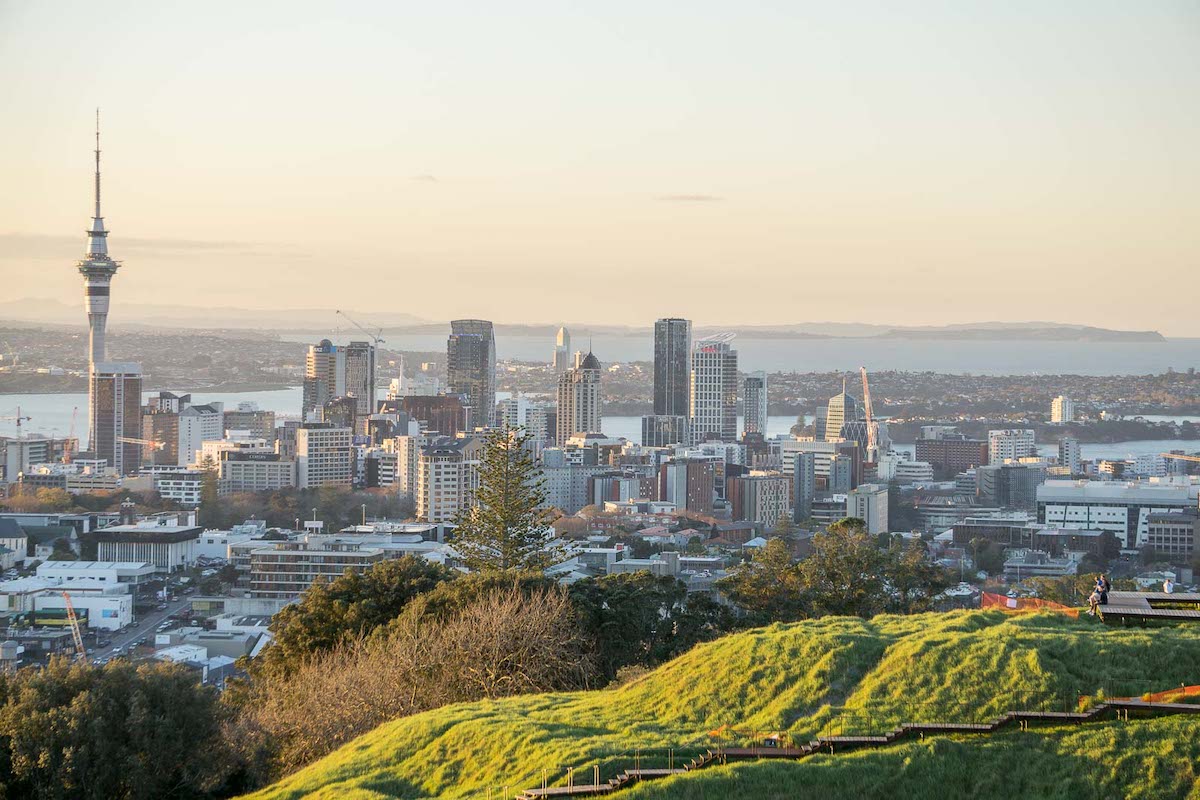



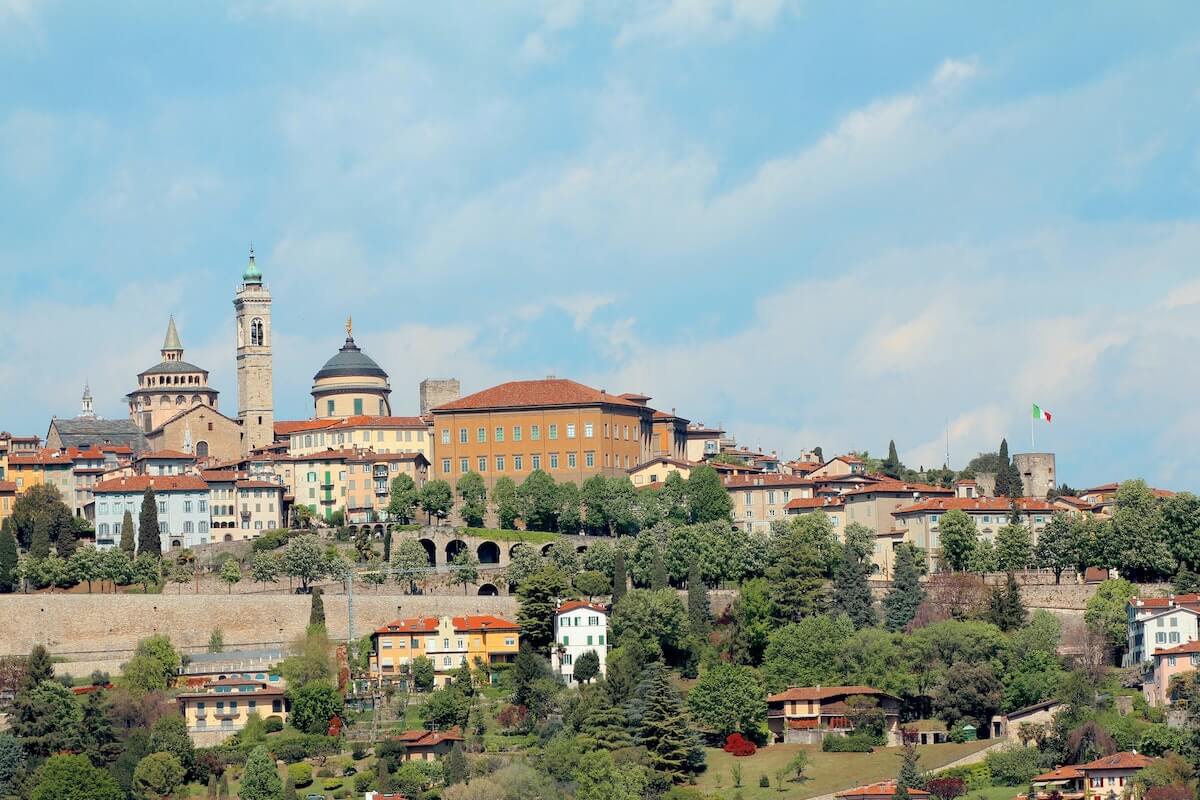
Really interesting and rounded post. Mexico is definitely on my list.
I loved this guide, it was the first I read and helped me get over all the negative news about Mexico. I kept coming back to your great advice throughout my visit to this amazing country, so a huge thank you for your inspiration!